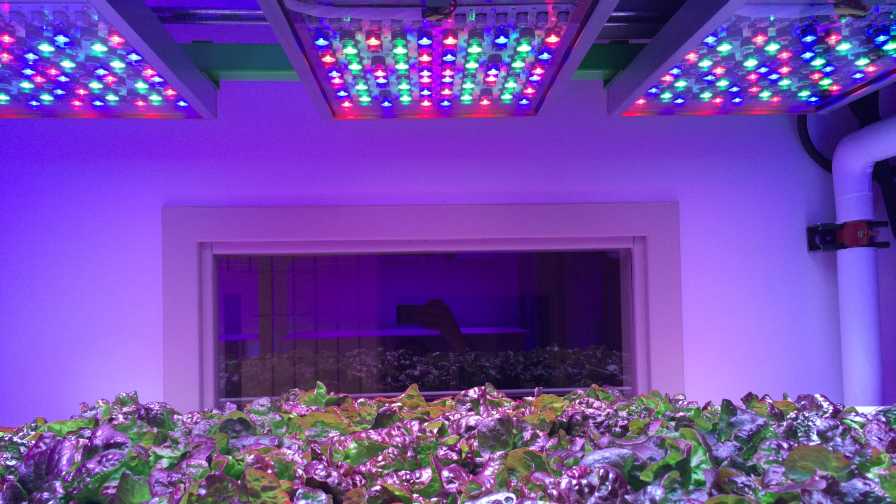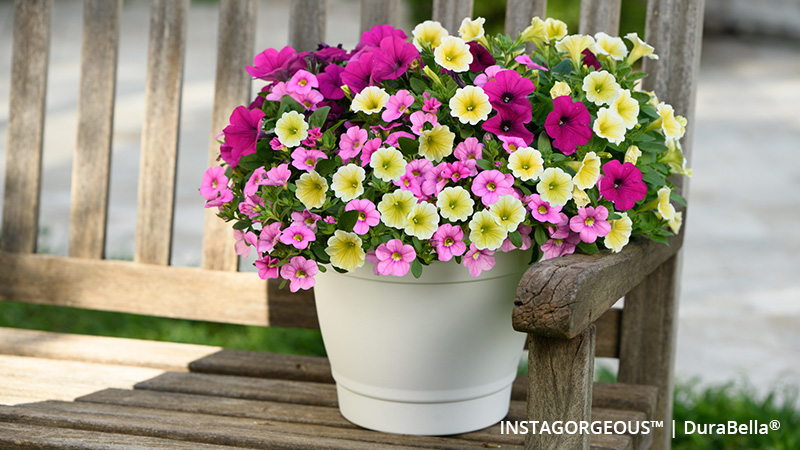Ways the New Technical Requirement for LEDs Will Affect Horticulture Lighting

Photo courtesy of Osram
The DesignLights Consortium (DLC) has released the final version of its “Technical Requirements for LED-based Horticultural Lighting: Version 2.0,” an update that will continue the industry transition from traditional lighting data and metrics to horticultural-specific lighting data and metrics that best represent horticultural lighting performance. The changes have an effective date of March 31, 2021.
After analysis of stakeholder comments on Draft 1 of the policy released in May, and in order to allow continued development of the nascent horticultural lighting market, the DLC determined that a change in the efficacy threshold for the Horticultural Lighting Qualified Products List (QPL) is not warranted at this time. The current photosynthetic photon efficacy (PPE) threshold of ≥ 1.90 µmol × J -1 will remain constant with V2.0. The DLC will review this aspect of the Technical Requirements in future versions of the specification.
“Horticultural lighting is a fast-growing segment of the electric load for many utilities in the U.S. and Canada,” says DLC Executive Director and CEO Christina Halfpenny. “In continued support of development of this industry, reflective of both the latest science and market trends, the new version of the DLC’s Horticultural Lighting Technical Requirements contains key updates in the benchmarks manufacturers must meet for listing products on our QPL.”
The DLC’s Horticultural QPL currently contains more than 125 products, with more being reviewed and added regularly. An increasing number of electric utilities rely on the DLC horticultural lighting specification and QPL in the design of energy efficiency programs for controlled-environment growing operations. About a dozen utilities now require the use of QPL products as a prerequisite for EE incentives; many others across North America have incorporated the DLC Technical Requirements into their programs while not yet requiring use of products on the QPL.
In addition, two states with cannabis-specific energy efficiency regulations offer a compliance pathway that requires use of the DLC’s Horticultural Lighting QPL along with a threshold PPE. To assist licensees in these states, the DLC’s Horticultural Lighting QPL offers a search filter to more easily find compliant products for these regulations.
Among updates in V2.0 of the Horticultural Technical Requirements is continued implementation of the DLC’s requirement that manufacturers use horticulture-specific terms to describe the flux maintenance of their submitted fixtures, rather than measurements expressed in lumens (which measure the brightness of light perceived by the human eye and unevenly emphasize some parts of the spectrum that are important for photosynthesis). Similarly, V2.0 updates language to use acronyms directly referenced in the American Society of Agricultural and Biological Engineers’ ANSI/ASABE S640: Quantities and Units of Electromagnetic Radiation for Plants (Photosynthetic Organisms).
After soliciting and gathering stakeholder comment with release of V2.0 Draft 1 in May, the DLC will also implement two changes designed to reduce testing burden and simplify the Horticultural QPL application review process. These include family grouping, which allows manufacturers to provide limited testing of the worst-case models within a product family group that demonstrate compliance with DLC requirements, and private labeling, which allows listing of products under multiple organizations and brands that are identical to the original equipment manufacturer (OEM) products already listed on the QPL.
Finally, with V2.0 the DLC is introducing two new optional reporting measures intended to convey flux and efficacy performance information across the range of electromagnetic radiation often associated with growth and development effects in plants (280-800nm). While not required for DLC qualification, manufacturers will have the option of reporting these measures for listing on the QPL under the V2.0 requirements.
What it Means for You
The DLC is a non-profit organization that has developed minimum performance and energy efficiency standards for lighting. In October 2018, they developed standards specifically for horticultural lighting, which is significant, according to Michigan State University’s Erik Runkle, considering plants and people perceive and respond to light differently. For an LED lighting fixture to become a qualified product, it must communicate important lighting information and meet minimum performance standards. Among the most notable reporting parameters are the energy efficacy of a fixture (the efficiency of converting electricity into light useful for photosynthesis), its total light output, its tolerance to greenhouse conditions, and its longevity. If a lighting fixture meets or exceeds all of the performance standards, it becomes a DLC-qualified product. Currently, 130 LED fixtures are qualified products.
Why is this important?
“First, qualified horticultural lighting products indicate they are relatively energy efficient (from a plant perspective), are long lasting, and tolerate greenhouse environments,” Runkle says. “Second, an increasing number of utility companies use the DLC specifications in their energy efficiency programs, and a qualified product usually means the fixture is eligible. Third, the lighting characteristics of a fixture (amount of light emitted, its spectral quality, etc.) are communicated in a transparent and accessible way. Collectively, this provides growers with unbiased information about the technical performance of LED lighting fixtures.”
In the scheme of things, Runkle says the changes are relatively minor, and most impact the lighting company more than the grower.
“The key metric, the minimum energy efficacy, remains the same at 1.9 µmol /J,” Runkle says. “Manufacturers will need to use even more horticulture-specific terms, and products must by certified by a safety organization (e.g., OSHA in the U.S.). Some changes were also made to make testing less burdensome for companies that have multiple products within a family or group of fixtures.”
Leora Radetsky, DLC Senior Lighting Scientist, says the specification will continue to help growers find objective information about more LED grow lights in the future.
“First, we expect many more products to be listed on the Horticultural Lighting Qualified Products List (QPL), because the revised specification allows manufacturers to list more products while reducing testing and application costs, and because the minimum threshold efficacy is being held at 1.9 µmol/J,”Radetsky says. “At the same time, it increases the rigor of the listed products by, for example, standardizing the use of one international safety certification, and standardizing the reporting of spectral and spatial data into one file, thereby assuring that horticultural specific metrics are used today and that growers can understand how their lights will perform even if new metrics are developed. In addition, the V2.0 spec allows manufacturers to optionally report photobiological active radiation (PBAR) flux and efficacy so that growers have a better understanding of the entire spectrum of light that the product provides.”









